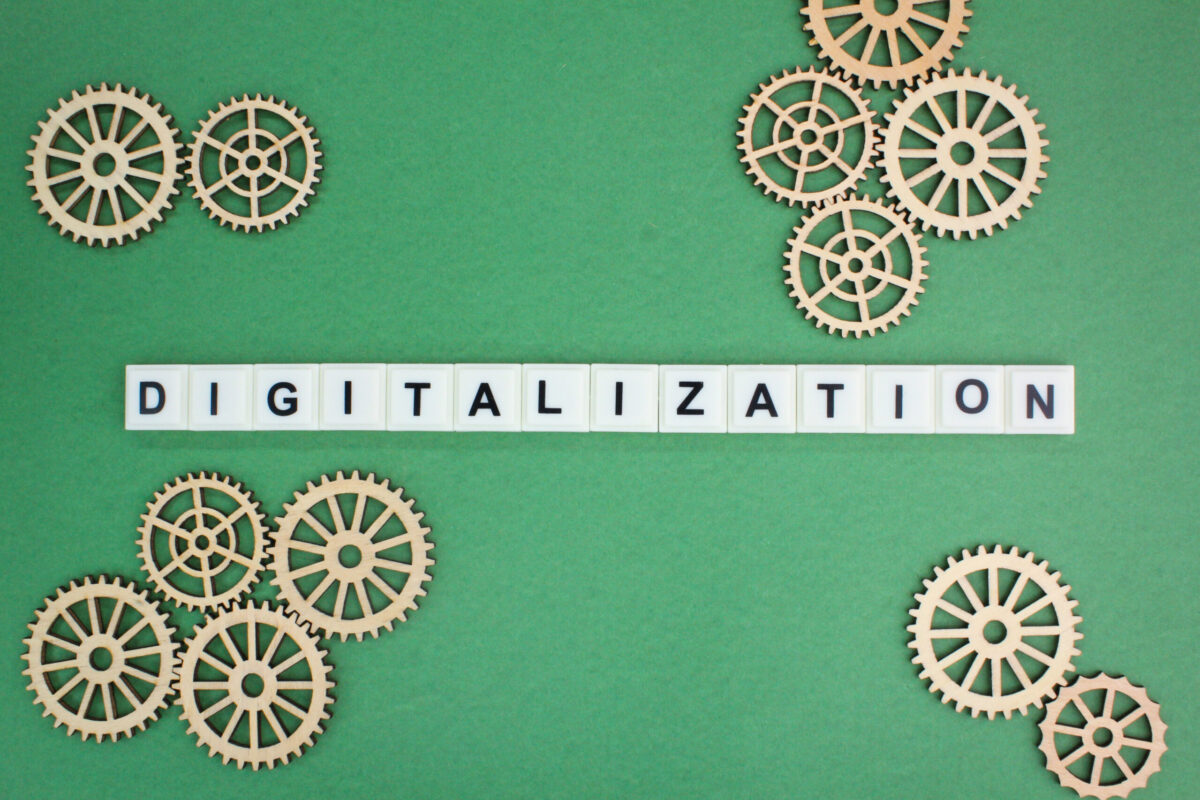Navigating the Transformative World of Generative AI
Technology is advancing at an unprecedented pace, and Generative AI is leading that race. Generative Artificial Intelligence (AI) is a cutting-edge technology with the potential to reshape industry, spark new creativity and revolutionise work.
Whilst few people outside of OpenAI / Microsoft / Data Science teams may have known about ChatGPT before November 2022 – they certainly do now. It was even on South Park in April!
A recent Accenture survey found that an overwhelming 97% of global leaders say Generative AI will be transformative for their company and their industry.
Never to be outdone, according to a recent report by Goldman Sachs to 300 million full-time jobs could be replaced by applications powered by Generative AI technologies. Though, at the same time, hundreds of new categories of jobs could be created, and the overall global productivity could be boosted by around 7% annually over a 10-year period.
But what is Generative AI, and why is it attracting so much attention?
Should you run hard to learn this technology now?
Will your business be crashed over by wave after wave of competitors employing Generative AI?
Is Generative AI just hype?
Read on to find out.
What is Generative AI?
Generative AI is a subset of AI. It can learn from existing data to generate new content, such as images, video, music, speech, and text, produce software code or product designs that mimic human content, detect fraud, aggregate data for knowledge management, quantitative analysis or reporting insights, i.e. what is considered human cognitive processes. As such, Generative AI is ushering in a new era where machines can generate ‘human-like’ content almost instantly.
“Generative AI is very similar to an army of clever interns who are wonderfully skilled at generating high quality output on any topic. “
What is ChatGPT?
ChatGPT is a specific implementation of Generative AI. It is a Large Language Model (LLM) that has been trained on a massive dataset of code and text. It has been designed for conversational purposes, allowing ChatGPT to generate human-like text in response to a wide range of prompts and questions put in by you and I. It is one of many conversational generative applications that include Bing AI, Bard, Claude AI, Meta GPT and more.
How Does Generative AI Work?
Generative AI uses many algorithmic techniques that continue to evolve. Foremost are AI foundation models, which are trained on a broad set of unlabelled data. These can be used for different tasks with additional fine-tuning.
Complex math, huge computing power, and, therefore, large quantities of cash are required to train models. This is why the largest, well-funded tech companies are amongst the earliest platform providers, e.g. Microsoft Bing, Google Bard, OpenAI ChatGPT.
What’s Behind the Sudden Hype?
AI is now accessible to everyone, and as a result, we are at the very beginning of the transformation of companies through AI.
Suddenly, a Cambrian explosion of AI start-ups and business ideas is propelling industries forward as many start to realise what is now possible with AI in everyone’s hands.
For the first time, businesses can become data-driven without needing to hire expensive consultants. They no longer need to possess superhuman intelligence, costly data scientists, massive data centres or a gazillion terabytes of data to answer business questions.
Where once software engineers were the preserve of big companies, now, thanks to Generative AI, every company of any size can code and create applications at near zero cost. The potential to develop and code exciting business applications is now open to everyone.
All of a sudden, everyone has access to superhuman AI capabilities that can craft new art, compose music, generate news, assist in drug discovery, create dynamic games, and translate languages using prompts.
The world needs more analytics, data-driven decision-making – and less gut – and Generative AI has brought Decision Intelligence within reach.
The era of intelligent humans with very cheap, smart AI is tantalisingly within our reach. Strategic cycles, once measured in years, might now become AI fuelled iterative cycles that happen in weekly or monthly – not yearly – planning cycles.
New business models are emerging, and these will be available to everyone.
Generative AI is a potential game changer for business.
If You Can Think of it – AI Can Create it!
The applications of Generative AI are as diverse as they are promising, and ChatGPT has democratised the use of AI at near-zero cost. How people and AI technology interact has changed forever. Now, if you can think it and describe it, then Generative AI can (or will) create it – including images, text and code.
Are People Interested in Generative AI and ChatGPT?
Heck yes. It has generated more interest than the launch of the iPhone and the World Wide Web combined in a much shorter time. For example, It took ChatGPT less than 5 five days to get a million users and reached 100 million users just two months after launching.
The practical implications and applications of Generative AI are exciting the business world. Generative AI has immense potential to revolutionize any field where creativity and innovation are key, which is a very different business technology than before. It is no exaggeration to say AI will change the way people work, learn, travel, get health care, and communicate with each other.
Leaders need a Generative AI strategy, and they need one now. They must quickly learn to recognise the importance of this technological innovation and how it might be used internally as part of a product, externally with customers and indeed using Generative AI to redesign new business architectures (e.g., resource, business model, AI, data, digital, partnerships, etc.).
Are There Any Risks to Generative AI?
Like any early-stage technology, there are risks, and there will be setbacks. We should be realistic about what we are looking to achieve with Generative AI and cognisant of the risks it presents.
For example, Generative AI could be used to create misinformation such as fake news, deepfakes, impact election results and more.
Generative AI can create content that appears believable but is in fact, inaccurate (i.e., hallucinations). This makes human validation essential and slows a firm’s ability to automate entire value chains.
ChatGPT’s ‘knowledge’ was cut off in September 2021, meaning it has yet to learn about the world since then.
What it does output, it is open to question as to whether it is copyright-protected and free for you to reuse – or whether you need the lawyers to check further.
Its training data could be biased – much like a lot of AI data sets – but it might not.
Does that mean you should stop throwing as much time and money as you can at Generative AI? No.
All future business technology roadmaps need to have this exceptional capability front and centre of their strategy.
So, what should I do?
Simple, leaders must weigh the risks of Generative AI, but they must not slow its progress. You will make mistakes. You will look back and laugh at some of the decisions you made, but you will not regret having taken action.
What Are The Business Benefits of Generative AI?
Generative AI can be used to automate, augment humans or machines, and autonomously execute business and IT processes. The benefits of Generative AI include faster product development, idea generation, enhanced customer experience, improved employee productivity, and new target operating models.
- Computer Code: Generative AI CoPilot applications can code like a super-human coder who knows multiple code languages. This has the potential to massively boost coders efficiency, or you may need fewer coders. For example, if a company has 100 software engineers and Copilot can make each 40% more efficient, then I can choose to get more done or remove 40 coders. Copilot is or will become a word as common as Google or Tweet for developers.
- Virtual assistants: It can be used to create human-like chatbots and virtual assistants that respond to natural language prompts (i.e., human voice, pictorial or text input) and provide personalized customer support and product recommendations.
- Product design Generative AI can be used to generate new product design ideas and speed up the development process.
- Content creation: It can be used to create new content or repurpose existing content in various formats, such as text, audio, digital art, video or computer code.
- Data analytics: Generative AI can analyse vast amounts of data to uncover patterns and insights that can inform business decision-making.
- Predictive maintenance: Generative AI can be used to predict when equipment is likely to fail, enabling proactive maintenance and reducing downtime (and the cost associated with it).
- Logistics: It has a lot of potential use cases for the logistics industry. It can optimize inventory management by predicting demand and automatically adjusting stock or order levels.
- and lots more.
Why is This Revolutionary?
We are entering a new era of software and business – Intelligence 2.0 – where Generative AI’s capabilities and applications are limited only to our imaginations. If you can think it and describe then Generative AI can (or will) be able to create it.
Generative AI has the potential to permanently accelerate innovation across industries, enabling faster problem-solving and the development of novel solutions and business operating models.
It affords us an opportunity to industrialise and scale a generative enterprise at a pace. We live in a technology-driven time that requires businesses to be in a permanent state of reinvention, i.e. be Mutable.
Businesses can now create a paradigm shift operating model – a Mutable Operating Model (MOM). For the first time, businesses have a very real way to survive and thrive in the digital age by continually reinventing themselves, their value proposition and the way they operate.
As such, Generative AI could change everything and anything in terms of what an organisation does and how it operates to deliver value.
Now that is huge!
Do I Need To Be Worried About My Job?
AI may not directly replace your entire job, but someone who knows how to use AI probably will. And that includes the replacement of knowledge workers and executives who don’t learn to use AI.
More precisely, great technology – ChatGPT AI-infused conversational AI chatbots can already answer any question presented in natural language form – will result in many people having to learn new skills or complete a different, more human, part of a role i.e., answering a call empathetically when someone has been in a car accident.
That’s ok as we have always had to learn new skills e.g., from blacksmiths to software engineers. And technology advances have tended to create more roles than they have destroyed.
Everyone can learn to use it to augment and improve their roles and career prospects. For example, anyone who successfully ‘co-pilots’ with AI will likely accomplish more in a given day than someone who does not know how to use it. Those individuals will be in high demand. e.g. a computer software engineer who uses GitHub Copilot to code.
History has shown that great technology that augments great people delivers better results than a machine or person alone, e.g. robotic process automation or intelligent automation technologies such as IDP plus a person achieves more with, than without a person.
That said, Generative AI ‘could’ and arguably is a technology that is already displacing large portions of the ‘cognitive’ working population. For example, artists who create digital artwork or cartoons are already finding themselves displaced by Dall-E and Midjourney prompters. Similarly, language translators, content creators, musicians, and copywriters may need to quickly find new income streams as Generative AI can already easily complete those tasks.
If that is the case, then do I need as many people in my business if everyone is immediately quicker and better than before?
Maybe, maybe not.
Generative AI opens the opportunity for the creative destruction of business architectures and more.
For example, if a business employs a person and they use generative AI to get their work outcomes delivered in 1/3rd of their working day what might that mean?
Well it could mean that their manager, and the company, is delighted as they are getting the outcomes they paid that individual to deliver.
Alternatively that same individual could take on 2 or 3 roles and work multi-portfolio. And by doing so, they could maximise their individual life time earnings i.e., their 80,000 hours of work.
Or the shareholders of a company might decide to retain only 1/3rd of the current staffing numbers as each staff member is capable of delivering 10x or 100x their previous output.
Alternatively, they may adopt an abundance mindset and use the now freed 2/3rds time to enter new markets, grow the business and so on.
The thing to recognise is that, some, any or all of these are now possible given that Generative AI and Intelligent Automation are at their current level of sophistication.
Yikes. What do I need to do?
Generative AI is potentially textbook Schumpeterian creative destruction at its best. Mass awareness has happened, now mass adoption is about to happen. We have entered a period of Digital Darwinism where only the ‘AI digital’ will survive. And whilst companies work to address hallucinations, bias, and privacy concerns, this has opened a window of opportunity for businesses to learn how to use Generative AI. That window will close more quickly than anyone realises.
For now, individuals and companies must rush to understand AI and then develop the AI, business, leadership and technical skills they need to implement Generative AI. Businesses must try AI on everything. They should get a minimal viable use case off the ground now simply to test and learn. They should test the veracity of their data as sufficient, relevant, quality, secure, well governed data is crucial for any type decision-making – #GenAI or otherwise.
Will all that be simple? Nope.
Businesses must hire data scientists, architects, software developers, business analysts and more.
They should develop leader AI and employee literacy. Why? Leadership teams must understand the technology’s potential to deliver value for the individual, their business and their shareholders at large. This knowledge provide them with the skills they need to help them shape critical personal and business decisions that directly impact their future.
What Can I do to Learn More About Generative AI?
The short answer is to rapidly develop the people, culture, policies, business strategy, and digital skills you need to thrive in a Generative AI-infused world FAST.
How? Educate everyone in the business on AI and AI use cases!
AI awareness training and prompt engineering, for example, needs to be on everyone’s to-do list. If you don’t know how to engage with AI, get the consulting help you need to run hard with Generative AI.
Do not hand this transformative core technology to a small IT team in the corner office!
Where AI strategies were drawn out over a 3-year roadmap, they are now moving too fast to plan beyond 12 months. Things are moving too quickly. The sheer amount of change that has happened in the past six months, suggests that this pace of change – driven by this goose-bump technology – will not slow down any time soon.
Generative AI is a once-in-a-lifetime opportunity to create a generative enterprise architecture that you can’t miss!
How can you learn more?
If you want to learn more about how Generative AI can significantly boost you companies outputs then book a FREE 30 minute introductory call so we can discuss this ‘goose bump’ capability together. The results can be staggering.




